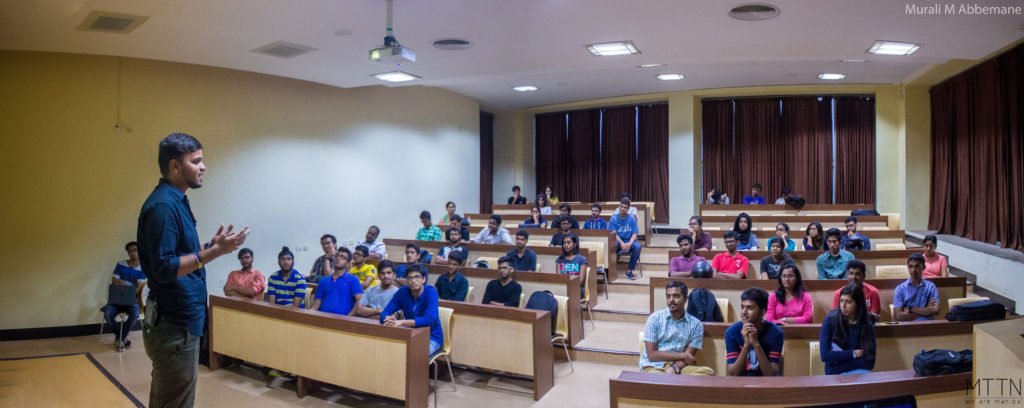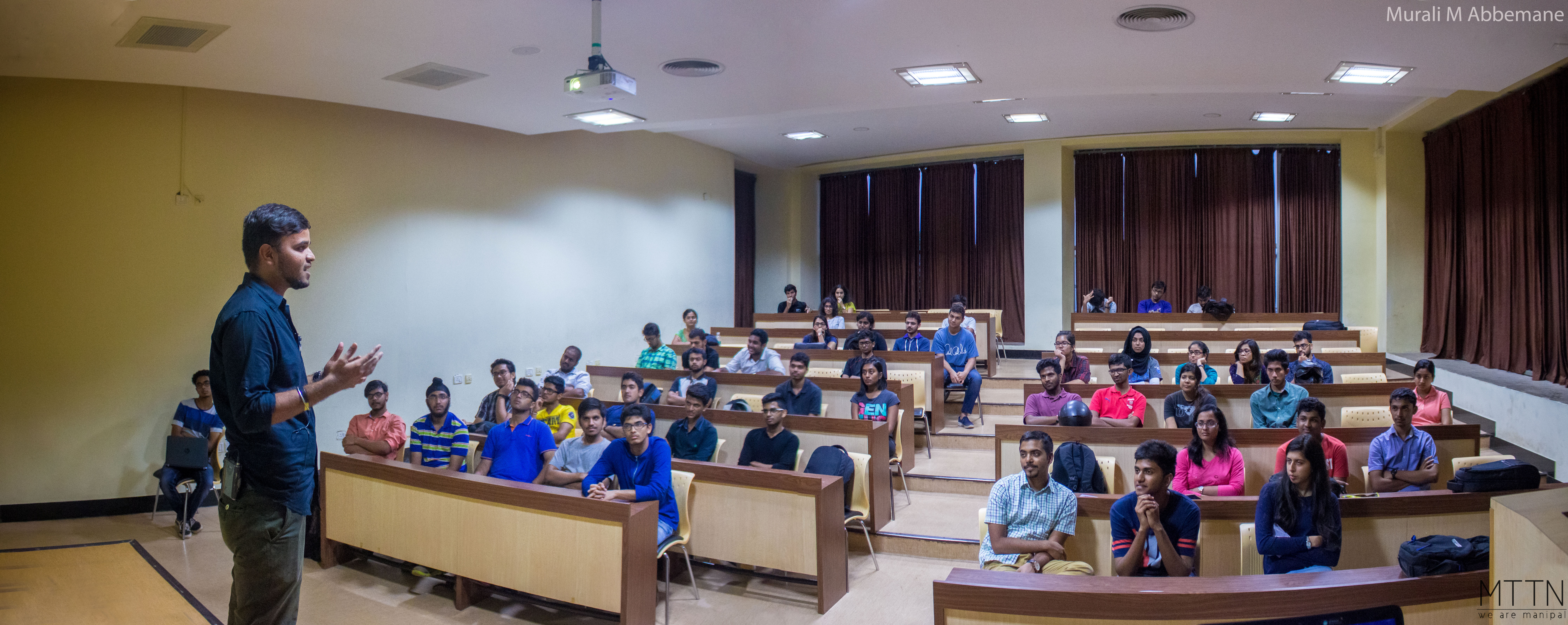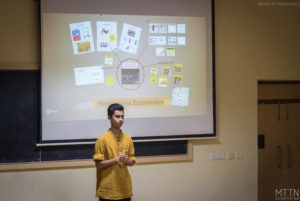
Two similar burgers sold by two distinct companies have two different taglines. One says ‘75% fat free’ and the other says ‘25% fat’. Which one would you prefer to buy? Scrutinize the first statement. Both taglines use vernacular language and mean the same thing, just reiterated in different ways. The question remains, which one would you want to buy? This was the essence of Economics 101, a successful attempt to revitalize the interest in economics in a first of its kind of lecture series.
The session started with an introduction to economics. It enriched the crowd with knowledge on different stocks, bank accounts and various requirements of managing finances on a daily basis. Imagine your friend has 100 dollars with him and is keen on dividing that in between you and him. How much money would you expect him to give you and what do you think is the minimum you would accept? Would you accept a meagre amount of 1 dollar? Would you persuade him for more? Or would you let it pass? This is what is called the Ultimatum Game. A lot of business strategies are based on this concept. In a business environment, it is extremely vital to analyze the strategies and mindsets of people.
One of the key factors is risk. Flip a coin and bet your money on its outcome. If a head pops up, you gain 100 dollars and if not, you settle with just 20 dollars. In the financial world, this is called risk, with there being risk takers, risk averse and risk neutral people.
Have you ever thought of how we take irrational decisions sometimes? Or about what guides us when we go to shop? And how the movie theatres sell expensive popcorn? All of this comes under what is called Behavioral Economics. Our thoughts are divided into two basic systems. The first system is about our immediate thoughts and actions taken to solve a problem. The second is about giving each decision a detailed thought. When our mind is in system 1 mode, we tend to make irrational decisions. Shopping consists of 30% rational thinking and 70% emotions. This is what the companies reaps profits from. In theatres, imagine there to be three different capacities of popcorns being served. The smaller one being sold at 3 dollars, the medium at 6 dollars and the large at 7 dollars each. Usually within our thinking capacity, we always end up tussling between the 6 dollar and the 7 dollar popcorn tub and since there is just one dollar difference, we end up buying the large tub of popcorn. What if the 6 dollar tub doesn’t really exist? Perhaps it’s on the menu just to sell the large tub. With a gap of 4 dollars between the small and the large, the company makes good profits. This is termed as Decoy effort. Various terms of marketing and economics such as the January Effect, Winter’s Curse and Hindsight Bias were shed light upon. Many such everyday actions and thoughts gained validation during the session.
Our mind is a maze of our thoughts and an unsolved enigma. The closer we get to the maze, the tougher it becomes to solve the enigma. Economics 101 not only engaged in a discourse on common everyday ideas, but also ignited the flame of curiosity. For the mind could either be a diligent servant or a devious master.


Leave a Reply
You must be logged in to post a comment.